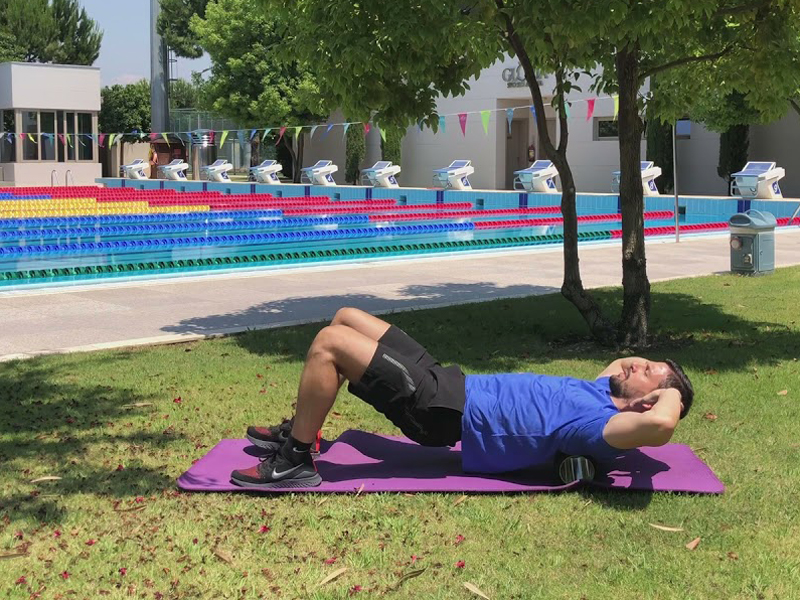The significance of thoracic mobility for optimum shoulder functioning (Half 1)
Shoulder damage prevention packages designed for swimmers are sometimes centered solely on the energy/endurance of the rotator cuff, and the rotational vary of the glenohumeral. Although these are vital areas to focus on, the higher physique motions concerned in swimming are very advanced and require contributions from a number of joint segments.
It is very important all the time think about that the pathoanatomic location of the damage could also be the results of limitations proximal or distal to that web site. An instance can be a swimmer with restricted shoulder flexion whose lack of mobility causes them to interact within the compensatory technique of hyperextending their lumbar area. Although it will assist them to attain an improved streamline in the course of the entry section of a dive or the underwater kicking section, it’ll trigger decrease again ache which can not instantly be attributed to a shoulder limitation.
One of many areas that swim and energy coaches ought to be aware of is the thoracic backbone. It is a transitional zone between the cervical and lumbar areas, the place roughly 80% of axial rotation originates. Thoracic extension is synchronized with shoulder motion, and thus contributes to the whole vary of movement throughout shoulder elevation. Adjustments in posture and restricted vary of movement on the thoracic backbone can affect the scapula kinematics and will consequently limit or impair shoulder functioning.

To scale back the danger of damage, it’s vital that athletes have a powerful base from which to load a motion. An sufficient thoracic extension is thus a prerequisite of many workouts carried out by swimmers within the gymnasium. Entrance squats, overheads presses, cleans, snatches, and pull-ups might all doubtlessly overload a compensatory space if an athlete has a restricted thoracic capability.
The next workouts are beneficial to strengthen the extension of the thorax. They require consideration and precision, as this space is restricted in vary by nature. A mean of 9-15 levels value of thoracic backbone extension is anticipated when performing these actions, with extra throughout flexion elevation.
1. Self-massage and thoracic mobilization with foam curler
From the supine place, place the center of your again on the froth curler along with your legs supporting your physique weight. Begin rolling and massaging the mid-back with sluggish and managed actions. Subsequent, cross your arms over your chest, mobilizing the center of the again whereas protecting your butt on the ground and strongly contracting your stomach. Concentrate on extending your mid and higher again over the curler. Don’t arch your decrease again and keep away from hyperextending your neck (think about you’re holding a tennis ball underneath your chin to assist). Chances are you’ll add some shoulder flexion actions offered this doesn’t trigger your decrease again to arch excessively.
2. Mendacity shoulder flexion with assisted thoracic extension
Lay within the supine place along with your decrease again flat on the ground and a rolled towel underneath the thoracic portion of the backbone. Seize a stick (although with observe it is possible for you to to carry out this train with out one) and flex your shoulders so far as potential whereas sustaining postural contact with the ground.
3. Susceptible sternum lifts
Lay within the inclined place on the ground along with your arms and elbows flexed to a 90-degree angle. Tuck your chin and elevate your head, shoulders and mid-back off the ground with out participating your higher extremities. Keep away from extending your total again, because the motion ought to be remoted to the contraction of simply the thoracic extensors. Maintain the contraction for 5-10 seconds, then repeat. Chances are you’ll emphasize the pelvic tilt by contracting your glutes to ensure that your lumbar backbone shouldn’t be extending.
4. Flooring slides
Whereas laying on the ground within the supine place with your ft on the ground and your knees flexed, flatten the lumbar area. Bend your elbows at a 90-degree angle, palms going through upwards. Making certain that your again is not arching off the ground, slide your arms overhead as far as potential whereas sustaining contact with the ground for the elbows and fingers. This train can later be progressed by performing it standing in opposition to a wall.
Prompt readings:
- N. Heneghan and Okay. Webb and T. Mahoney and A. Rushton. Thoracic backbone mobility, a vital hyperlink in higher limb kinetic chains in athletes: A scientific evaluation. Translational Sports activities Medication, 2019, 2, 301 – 315
- Ruiz J, Feigenbaum L, Greatest TM. The Thoracic Backbone within the Overhead Athlete. Curr Sports activities Med Rep. 2020 Jan;19(1):11-16. doi: 10.1249/JSR.0000000000000671. PMID: 31913918.
- Barrett E, O’Keeffe M, O’Sullivan Okay, Lewis J, McCreesh Okay. Is thoracic backbone posture related to shoulder ache, vary of movement and performance? A scientific evaluation. Man Ther. 2016 Dec;26:38-46. doi: 10.1016/j.math.2016.07.008. Epub 2016 Jul 21. PMID: 27475532.
- Hunter DJ, Rivett DA, McKeirnan S, Smith L, Snodgrass SJ. Relationship Between Shoulder Impingement Syndrome and Thoracic Posture. Phys Ther. 2020 Apr 17;100(4):677-686. doi: 10.1093/ptj/pzz182. PMID: 31825488.
- Crosbie J, Kilbreath SL, Hollmann L, York S. Scapulohumeral rhythm and related spinal movement. Clin Biomech (Bristol, Avon). 2008 Feb;23(2):184-92. doi: 10.1016/j.clinbiomech.2007.09.012. Epub 2007 Nov 5. PMID: 17981379.
- Kebaetse M, McClure P, Pratt NA. Thoracic place impact on shoulder vary of movement, energy, and three-dimensional scapular kinematics. Arch Phys Med Rehabil. 1999 Aug;80(8):945-50. doi: 10.1016/s0003-9993(99)90088-6. PMID: 10453773.
